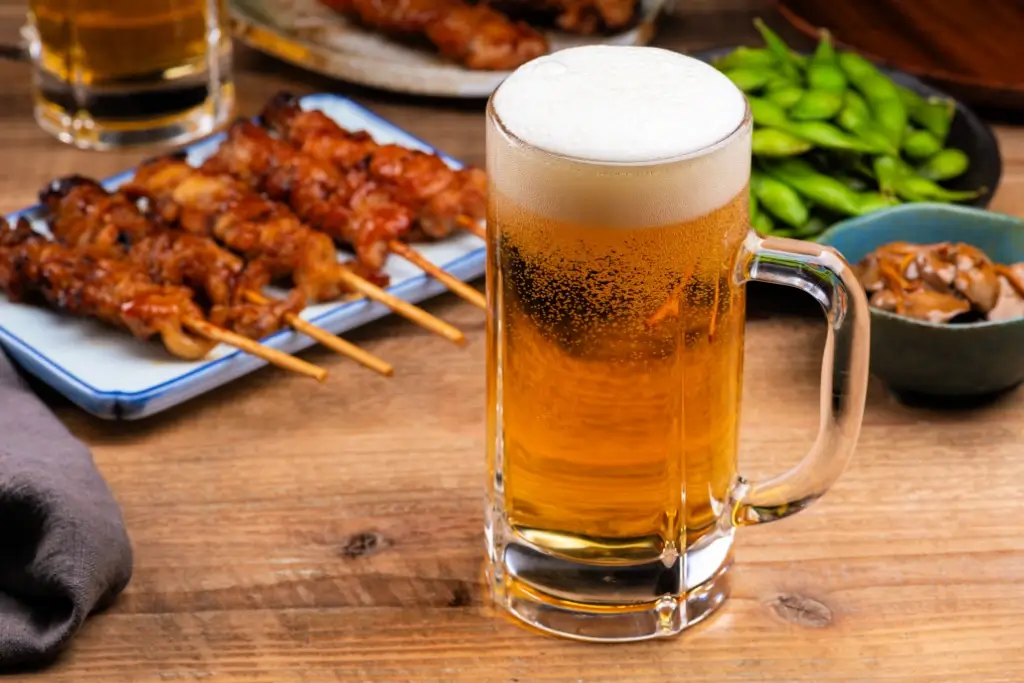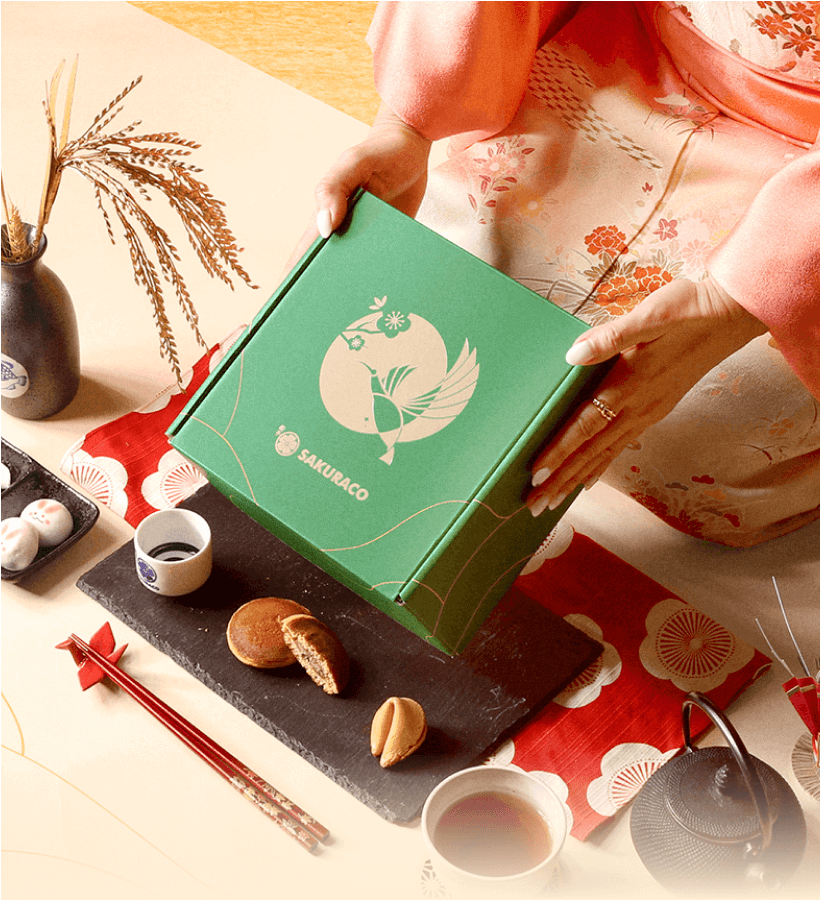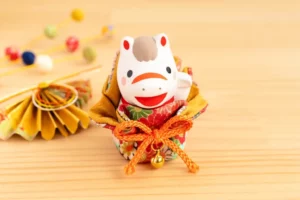An izakaya is a casual Japanese dining pub where food, drink, and conversation come together. From small corner shops with paper lanterns to busy chain restaurants near train stations, izakaya are a fixture of Japan’s social life. They serve small, shared dishes with drinks, creating a relaxed space for coworkers, families, and friends to unwind. To understand Japan’s approach to everyday dining, an evening at an izakaya is essential!
Table of Contents
ToggleHistory of Izakaya
The roots of the izakaya can be traced back to the Edo period, when sake shops started allowing customers to drink on-site. These “stay-in” sake shops served simple snacks, such as dried squid or miso-marinated vegetables, to pair with their drinks. The term izakaya literally means “stay at a sake shop.” Over time, the concept evolved from standing bars to seated establishments offering cooked dishes.
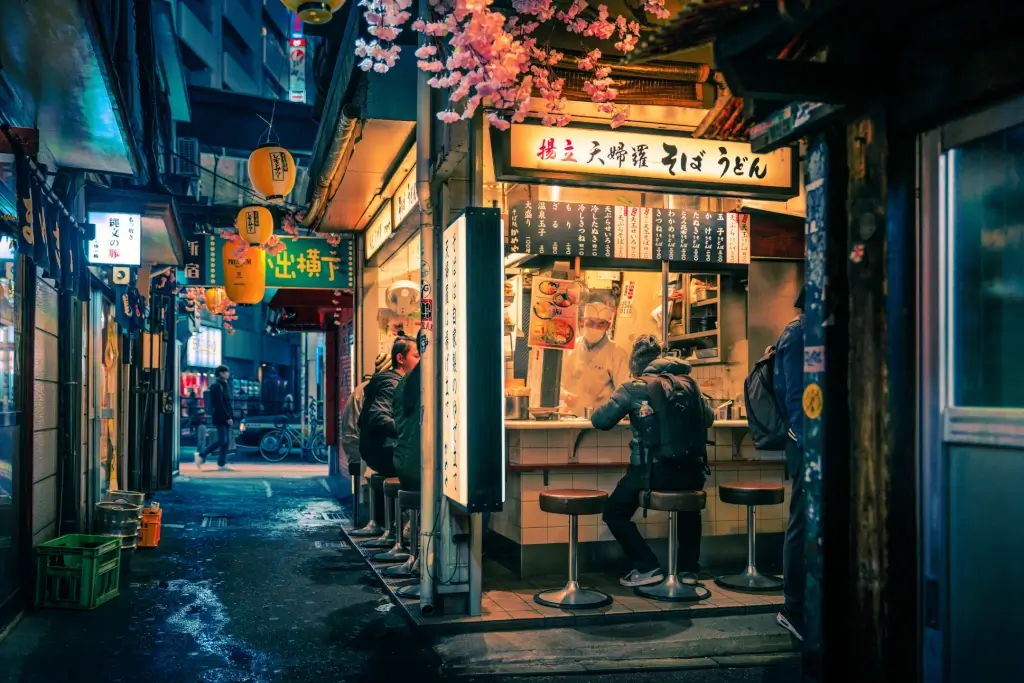
As urban life expanded, izakaya became spaces for merchants and travelers, where they could eat, drink, and socialize freely. During the Meiji and Showa eras, izakayas became part of everyday working life. Industrialization brought office jobs and a strong “after-work” drinking culture, giving rise to the tradition of nomikai. The menu expanded to include yakitori, nimono, and karaage. Despite modernization, the atmosphere has remained unchanged for generations.
Specific Customs
Visiting an izakaya follows a few customs that set it apart from other restaurants. Guests are seated and greeted with an oshibori, a damp towel used to clean hands, followed by an otoshi, a small appetizer such as simmered vegetables or tofu. The otoshi is usually included as part of the table charge. Orders are made in rounds (first drinks, then food) and dishes arrive as they’re ready, encouraging a steady rhythm of eating and chatting.
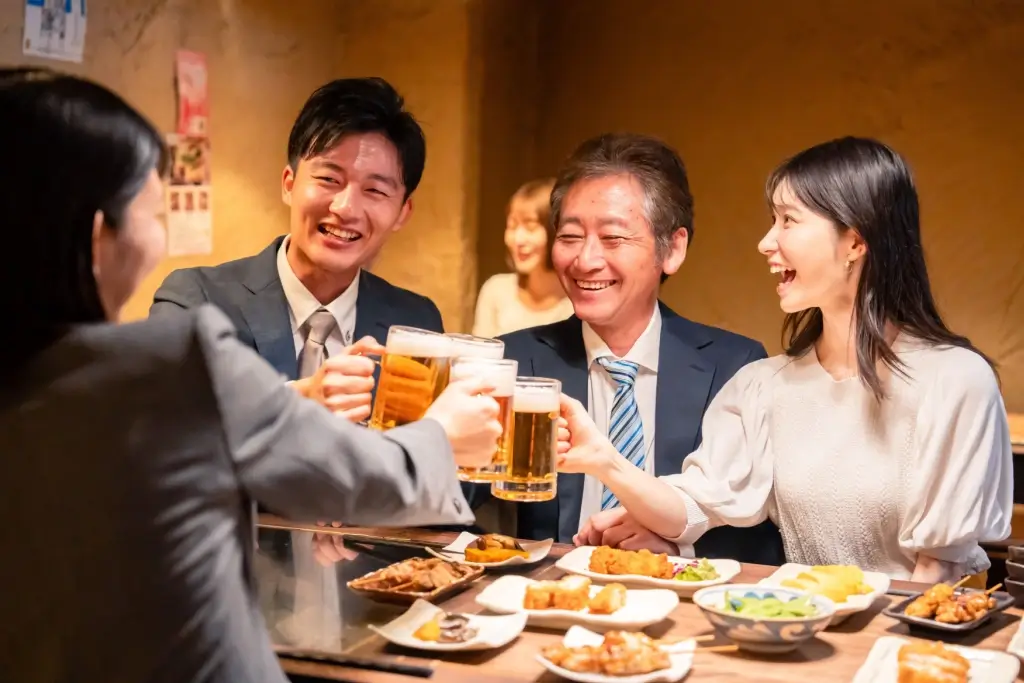
Sharing food is the norm. Dishes are placed in the center, and everyone takes small portions using serving chopsticks. The first toast, or kanpai, is an important moment. At the end of the meal, guests can request the check with “okaikei onegaishimasu.” Many groups then proceed to a second stop, known as an “afterparty” (ni-jikai), such as karaoke or ramen, keeping the social energy alive late into the night.
Are you looking for authentic Japanese snacks? Check out Sakuraco! Sakuraco delivers traditional Japanese snacks, teas, and sweets from local Japanese makers directly to your door every month, allowing you to experience the taste and tradition of Japan in your own home.

What kind of food can I enjoy at an izakaya?
Every izakaya menu features a mix of grilled, fried, and simmered dishes, carefully designed to pair with drinks. Yakitori, skewered chicken grilled over charcoal, is a classic choice, often seasoned with salt or sweet soy glaze. Agedashi tofu, nankotsu, and gyusuji are other staples. Sashimi and karaage are almost universal, while lighter dishes like hiyayakko, cold tofu with toppings, balance the heavier plates.

Regional specialties add variety across Japan. In Nagoya, you might find pork cutlets with red miso sauce. In Osaka, many izakayas serve kushikatsu — deep-fried skewers dipped in a shared sauce. Hokkaido izakayas often feature hokke (grilled Atka mackerel) or kani miso (crab paste). Seasonal dishes also play a significant role; this local and seasonal focus is one reason no two izakaya experiences feel the same.
Chiba-chan (大衆酒場 ちばチャン)
Chiba-chan is a popular chain known for its energetic, student-friendly atmosphere and enormous serving sizes. The menu is built around bakamori portions, literally “foolishly big” plates, of fried chicken, yakisoba, and French fries. The restaurant’s interior features nostalgic touches, such as paper lanterns and handwritten menus, evoking the taishū sakaba (everyman’s pub) style.
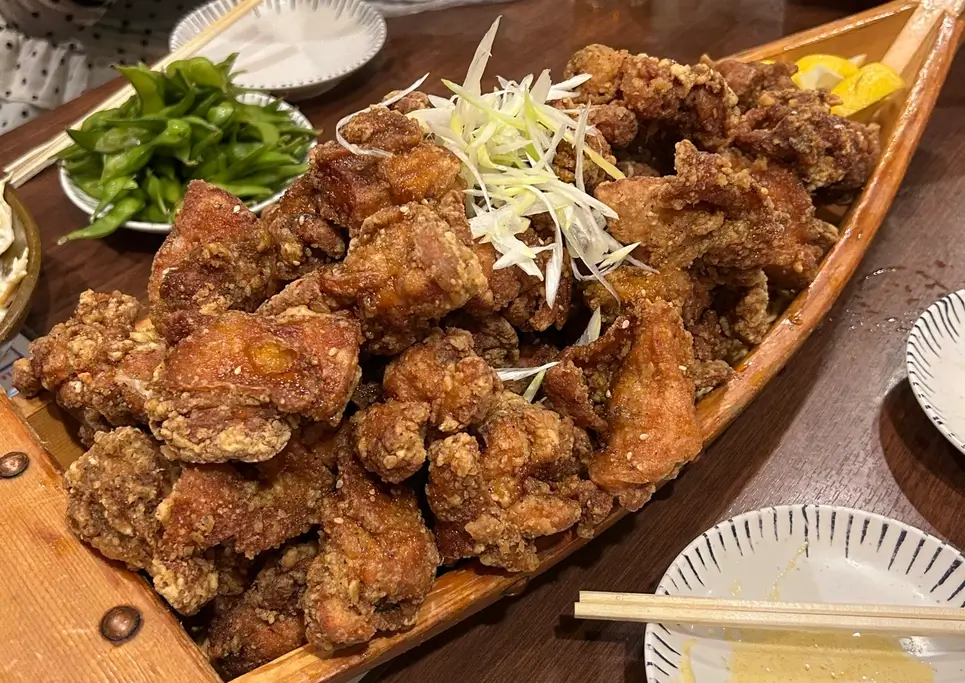
Chiba-chan’s affordability and humor have made it a favorite among university students and young professionals. It’s common to see groups of ten or more sharing a mountain of karaage late into the night. The food may not be refined, but it perfectly captures the communal, lighthearted side of izakaya dining — inexpensive, fun, and built for laughter.
Torikizoku (鳥貴族)
Torikizoku specializes in yakitori, with every item on the menu priced the same — typically around ¥360, regardless of dish. The chain uses 100% domestically raised chicken and grills everything to order over real charcoal. It’s known for consistency: no matter which location you visit, the flavor and service stay the same.
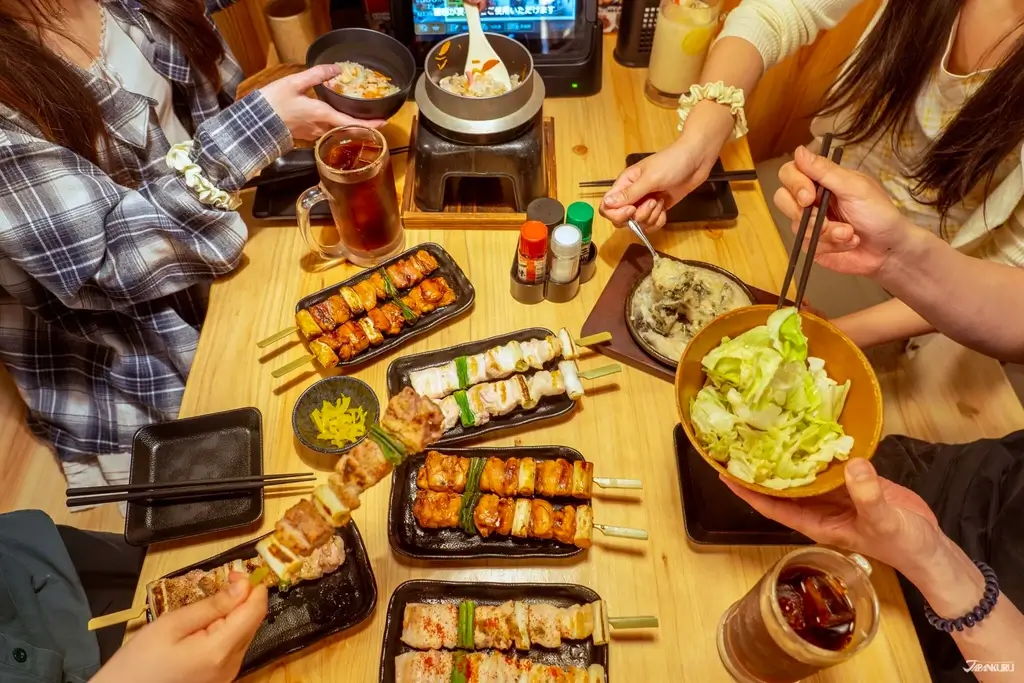
The menu also features small plates, including cheese tsukune, edamame, and sweet potato fries. The setting is casual — wooden walls, simple décor, and self-service drink machines at some branches. Torikizoku appeals to office workers and students who want high-quality food without unexpected charges on their bills. It represents the reliable, everyday side of Japan’s izakaya scene.
Watami (和民)
Watami is one of Japan’s best-known izakaya chains, offering a slightly more polished experience. Founded in 1984, it gained fame for its diverse menu that combines traditional Japanese dishes with modern fusion. Guests can order grilled fish, simmered pork belly, or more contemporary fare, such as cheese tofu and seafood carpaccio.
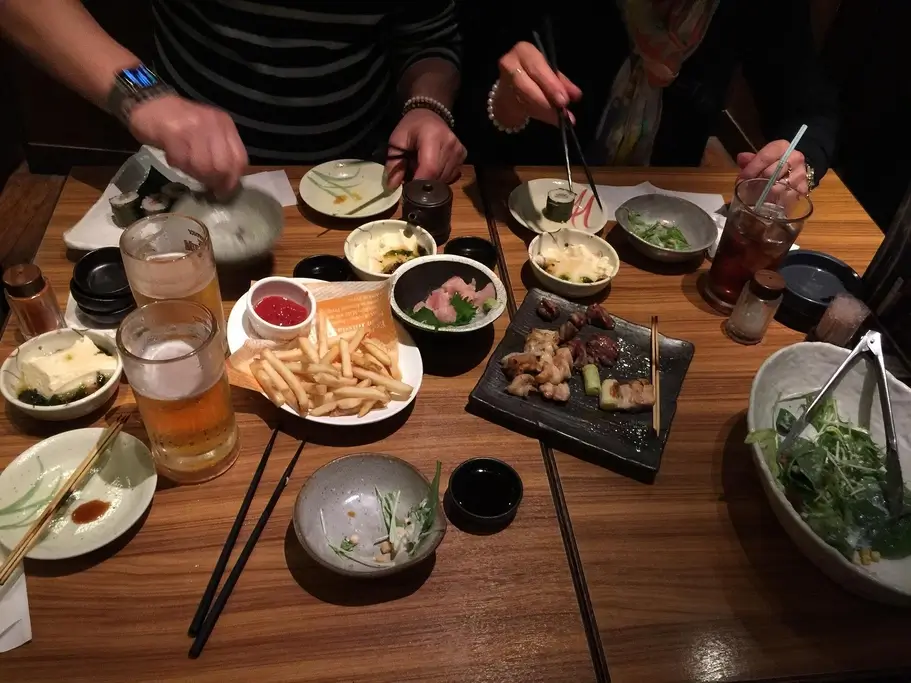
Watami’s interiors are quiet and spacious, often featuring private booths for groups. The chain emphasizes sustainability through its own farms and eco-friendly policies. It’s a favorite for business gatherings and family dinners, offering a calmer alternative to louder pubs. Watami shows how izakaya culture can adapt to new dining expectations while keeping its welcoming spirit.
Why should I enjoy an izakaya?
Experiencing an izakaya lets you understand how Japan connects after hours. Unlike restaurants that might be too formal, izakayas are all about comfort and equality. Everyone, from salary workers to students, shares the same dishes and stories. The casual pace allows you to sample a variety of flavors, including grilled skewers, simmered dishes, and local drinks, all in one sitting. It reflects Japan’s values of hospitality, sharing, and seasonal eating.
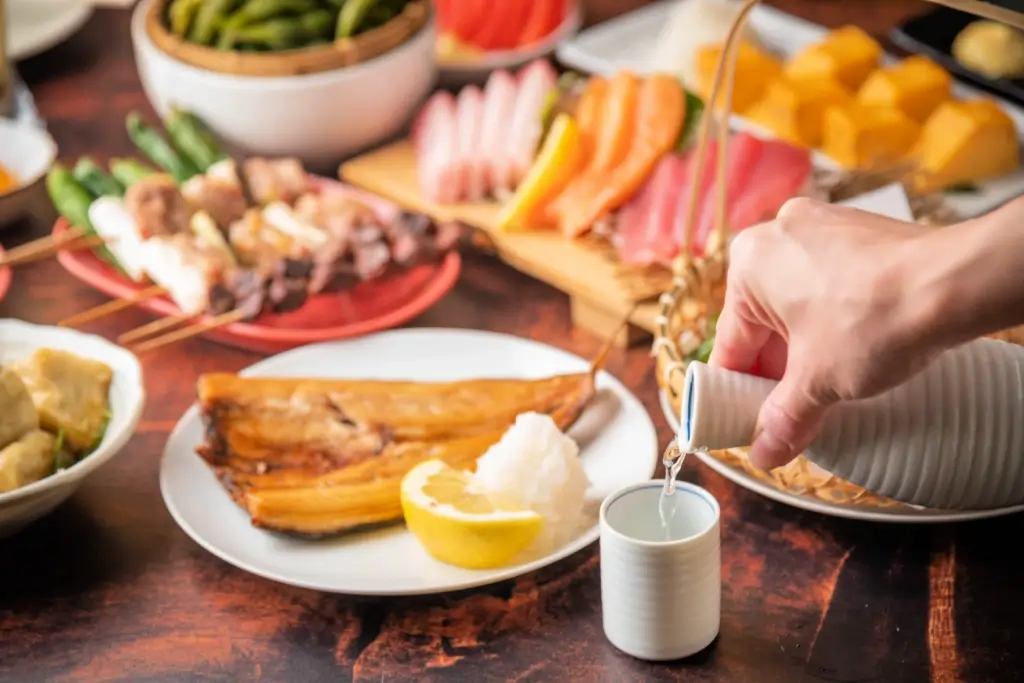
For travelers, a visit to an izakaya can reveal local life more authentically than any tourist attraction. You’ll see coworkers unwinding, friends celebrating, and chefs moving quickly behind the counter. It’s a place where language barriers fade over shared plates and friendly gestures. Whether you sit at a counter in Tokyo or a quiet backstreet in Fukuoka, the warmth and rhythm of an izakaya night are unmistakably Japanese. Have you ever been to an izakaya? What do you like to eat there? Let us know in the comments below!

